- Jul 26, 2022
How to Dial in your Offshore Bass Fishing with Deep Diving Crankbaits
Learn to locate summer bass on offshore structure and how to use deep-diving crankbaits to tap into hot fishing action throughout summer.
The heat of summer delivers a delightful thing to anglers. Bass schooled up on offshore structure. These fish will succumb to various lures, but nothing fires up a school quite like a crankbait! Master offshore bass fishing by learning to locate bass on deep structure and using deep diving crankbaits to tap into outstanding fishing action.
All About Location
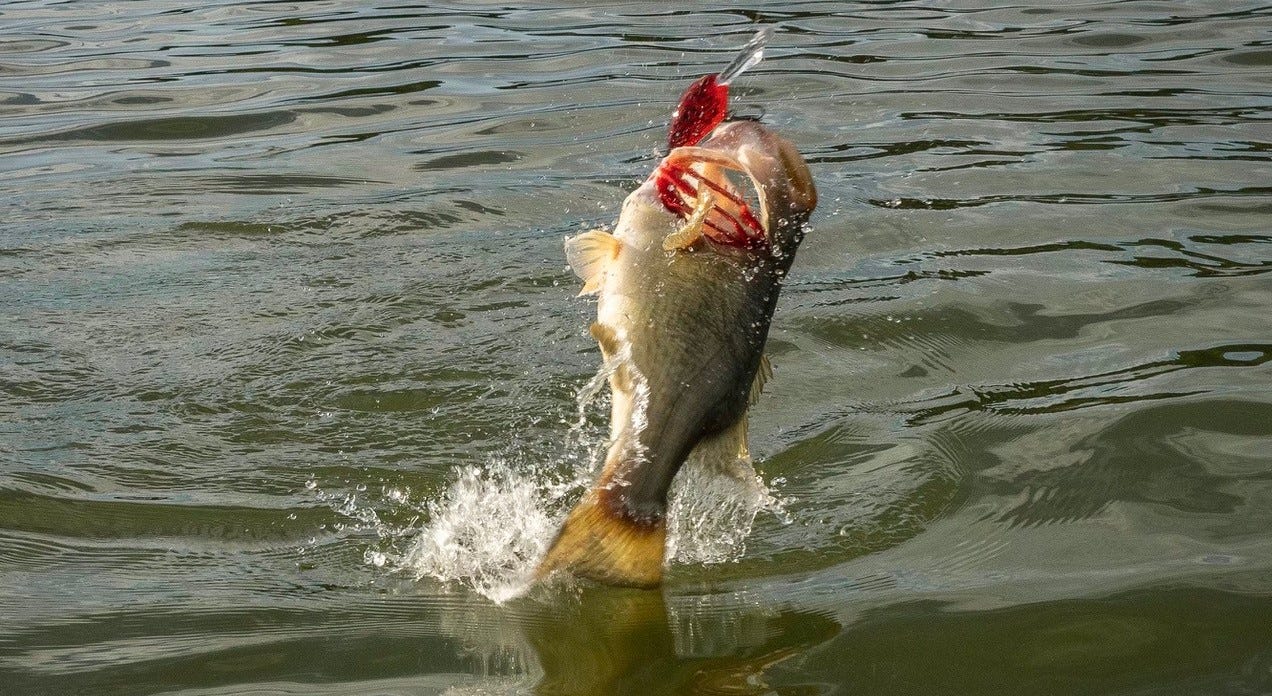

The best deep diving crankbait fishing locations couple ideal structure with favorable cover. And, yes, there’s a difference.
Bass use cover wherever they can find it – shallow, deep or in between. Brushpiles, aquatic vegetation, trees, boulders, docks and even the occasional sunken automobile provide predator species like largemouth and smallmouth bass with concealment for ambushing baitfish and other forage, along with other advantages.
“Structure” refers to features of the lake bottom discernibly different from the surrounding underwater terrain. Drop-offs, ledges (classic drop-offs in reservoirs formed by river and creek channels and rock formations), underwater points, and weedlines are the kinds of features easily identified with astute sonar reading. The kinds of structural elements that are less apparent, but of equal importance, relate to bottom composition, usually a hard bottom such as clay, gravel, boulders, chunk rock, or ledge rock.
Bottom content transitions from silt to sand, sand to rubble or rock, changes in rock size or type, shell beds, or places where bare hard bottom meets an area with aquatic plant growth are sometimes more difficult to detect, but they can make a world of difference to a bass.
While good cover or structure might hold anything from a single predator to a small school, well-schooled crankbait anglers who understand offshore bass fishing look for prime locations that couple classic structural elements with cover – the kinds of areas that can hold dozens (if not hundreds) of bass.
The value of such locations is immense to a bass, providing comforts and conveniences like shade and retreat. Deeper water locations offer the added advantage of stability through changes in weather or water levels or clarity.
Of course, all these elements mean next to nothing in the absence of that critical “X” factor, which is food! Prime cranking locations are usually favorable to the menu items that bass favor, including baitfish, panfish and crawfish and more.
Offshore Bass Fishing
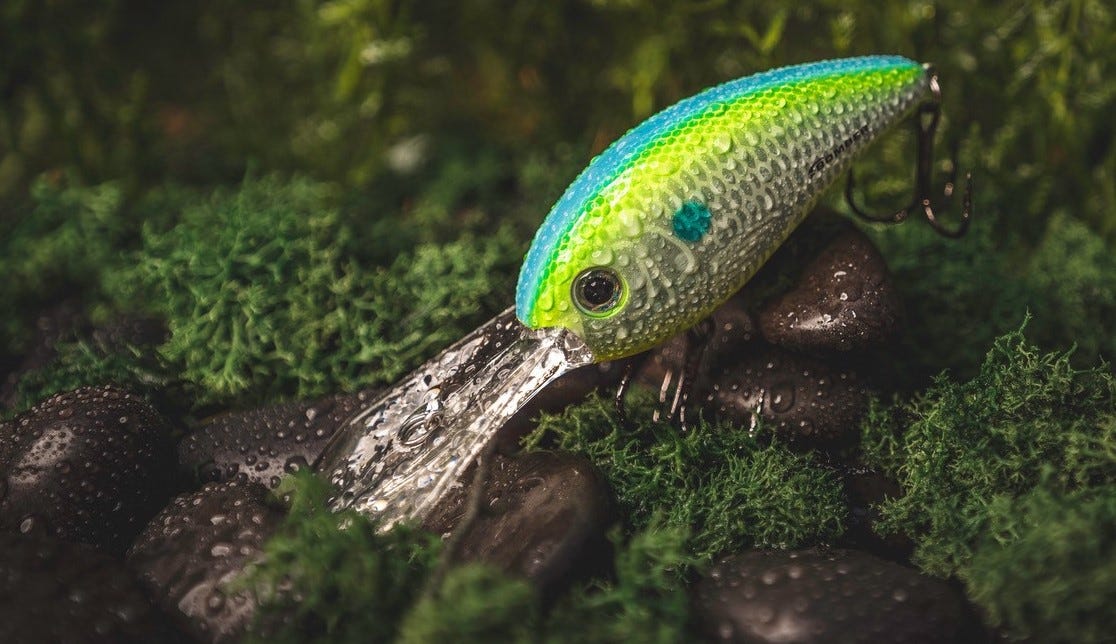

“Deep” water and “deep cranking” are relative concepts. On many eutrophic natural lakes, breaklines (sudden drops in depth) will occur at roughly the 9-foot depth level, making for a modest yet convenient demarcation between shallow/mid-depth waters and “deep.” Breaks can be small with the lake flattening or leveling again at only 11 or 12 feet or they can taper to depths of 17 feet or more.
On reservoirs, the deep crankbait bite generally takes place along creek channels and main lake river channels, though lakes set in rocky terrain may often feature deep secondary ledges that are well worth cranking.
The edges of vegetation, so-called “grasslines” or “weedlines,” also comprise important structural breaks. Aquatic plants host an abundance of lake life from tiny microorganisms and invertebrates to fry, baitfish, sunfish and more. Locations where a drop-off coincides with a grassline can be very productive, as can a slow-taper or hard bottom area that creates a bare flat with quick access to both the grassline and drop-off.
Crankbait Knowledge
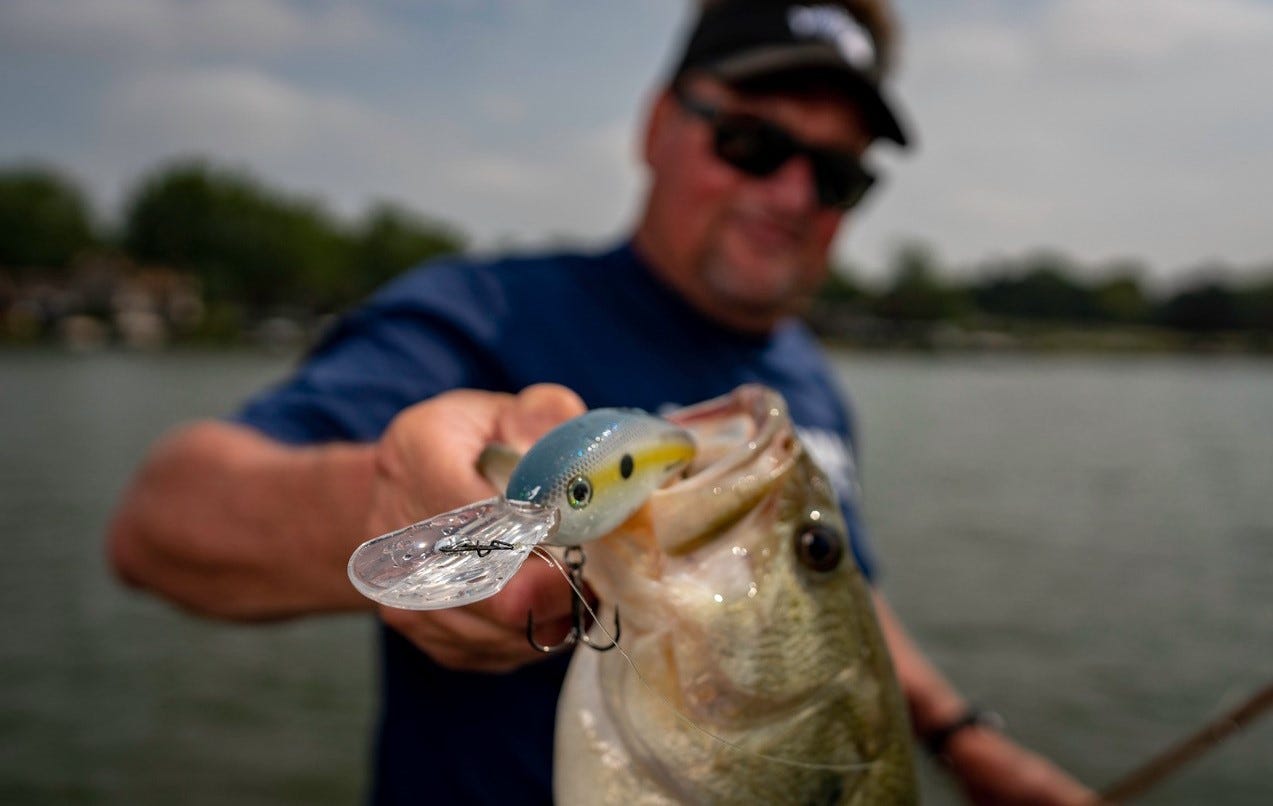

Decades ago, the running depths of crankbaits were secrets held by only meticulous anglers who were willing to take the time and trouble to test and chart the depth ranges of their lures. No more. Today, most manufacturers label crankbait packages with tested running depths.
Long casts are essential not only to achieve desired depths, but for keeping the bait within the target depth range for a good portion of the retrieve.
Crankbaits vary in action based on lip, shape, material and body length. Flat-body baits tend to have a tighter action; round-bodied baits, a wider swing.
Size matters, too. Often bass will key in on a certain size and type of baitfish, a good time for “match the hatch” thinking, in terms of size on and color.
Because the erratic action of a bottom-bouncing crankbait itself often triggers a strike, it makes tactical sense to choose a crankbait designed to run deeper than the depth of the water you are fishing.
Fishing Deep Diving Crankbaits
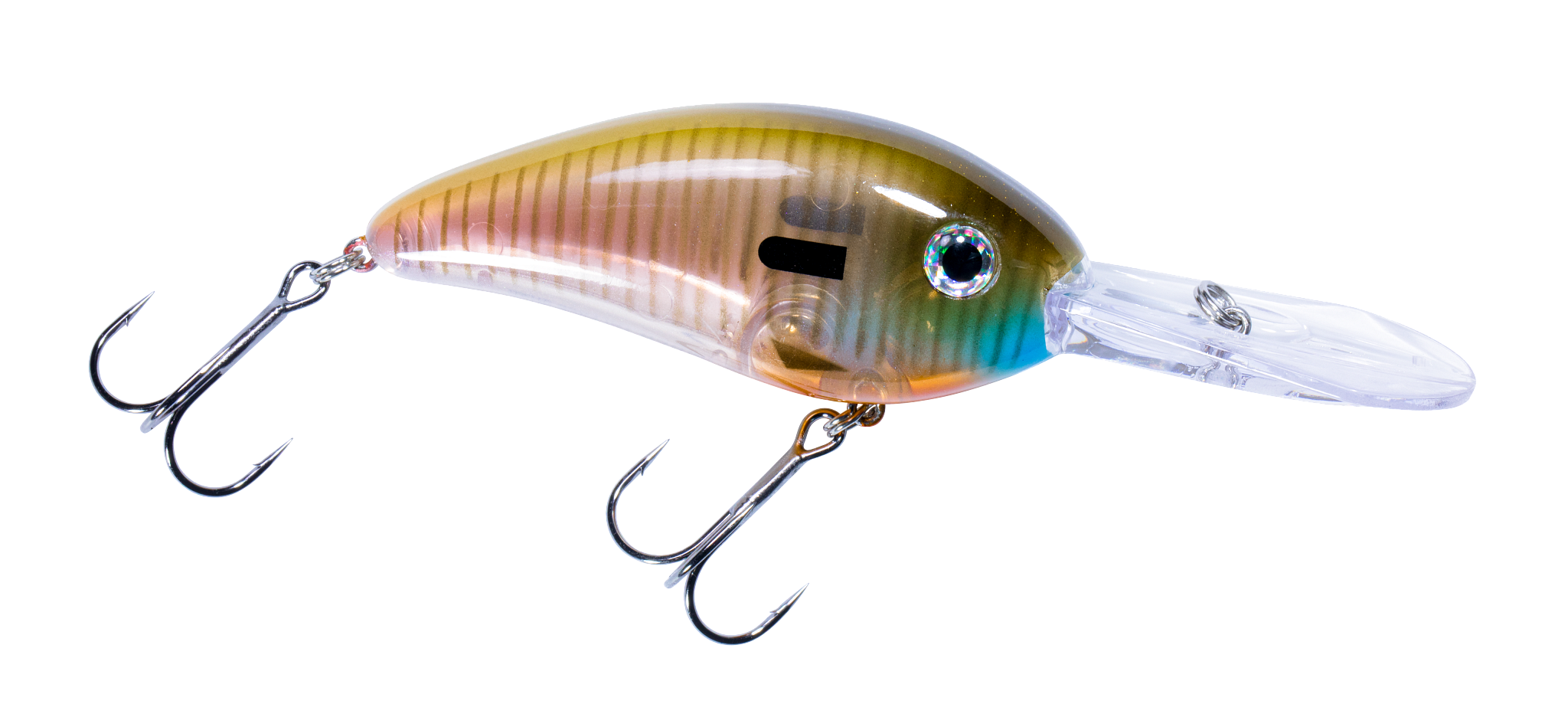

Deep cranking doesn’t require the casting accuracy of working shoreline cover, but it is an art that imposes its own set of disciplines.
Boat control and positioning are critical. Start with a good map. Then dial in on the structural configuration and location of grass edges, drop-offs and hard-bottom areas. Allow for long casts that enable your crankbait to reach target depths and make a sustained run in the strike zone.
Milk run strategies increase chances of a big bass payoff. Have several favorable locations mapped. Rotate through them during the day, varying your boat position too. On reservoirs with shad, bass may hold in prime ambush position along ledges or tail schools of roaming shad. Don’t be afraid to work extended stretches of promising structure. Use your electronics for signs of fish.
Retrieves matter. Many treat crankbait fishing as a mindless cast-and-crank exercise and consequently miss out on the lion’s share of the action. Be conscious of what your bait is doing. Speed of retrieve can be a critical variable. Deflection off the bottom triggers many strikes, but even when fish are positioned off bottom, you can get that same triggering effect by adding an erratic motion to your bait with a stop-and-start approach or pause-and-sweep.
What makes deep crankbait fishing most exciting is the very real prospect of firing up a school and getting five, 10 or even more fish to belt your bait. Bass situated on these prime locations tend to be larger than average fish and sometimes genuine monsters.
Top Baits for Deep Cranking
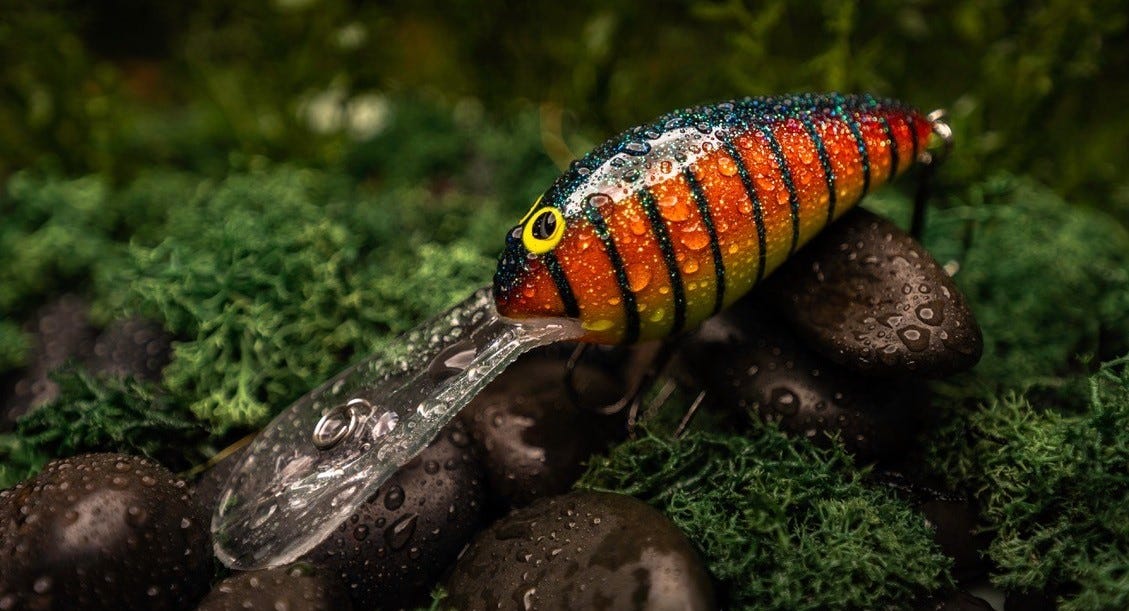

- Norman DD22 – This classic crankbait has been plumbing the depths of prime bass waters since the 1980s. One of the first crankbaits to reach 11- to 17-foot depths reliably, it is still counting coup on big bass and cashing checks for tournament anglers. Its rounded sunfish-shaped body and keeled lip keep it tracking faithfully even after deflecting off objects and hard bottom. The DD22 weighs 5/8 ounce and is 3 inches long.
- Norman Deep Little N – Flashing the same profile as the larger DD22, this 3/8-ounce, 2 ½-inch bait digs to depths of 9 to 12 feet and is ideal when bass zero in on smaller baitfish.
- Bomber Fat Free Shad – This breakthrough Bomber bait has spawned a series of crankbaits, including a variety of deep runners of varying sizes and depth ranges. The Bomber Fat Free Shad Jr. is a 1/2-ounce bait (2-1/2 inches) that dives 8 to 14 feet. The Fat Free Shad BD8F achieves depths of 17 to 19 feet; the BD7F 12 to 16 feet. Both baits are three inches long. The compact Bomber Fat Free Fingerling (2 3/8 inches) dives 8 to10 feet.
- Bomber Deep Flat A – The flat-sided Bomber Deep Flat A delivers tight action, reaching 8-foot depths on a typical cast and 12- to 15-foot depths when trolled.
- Bandit 300 – A classic that helped build the Bandit name, the 300 can reach depths of 12 feet on 10-pound line and offers a moderate wobble. Part of its appeal rests in its wide array of color patterns.



